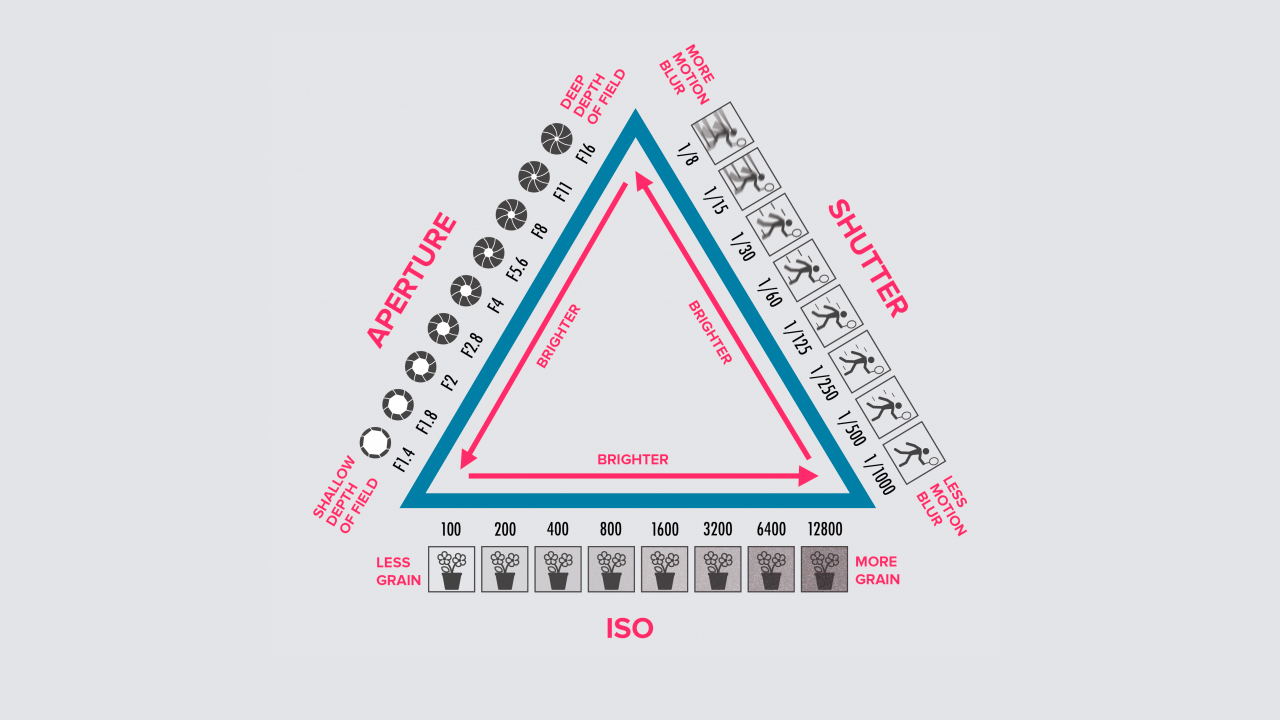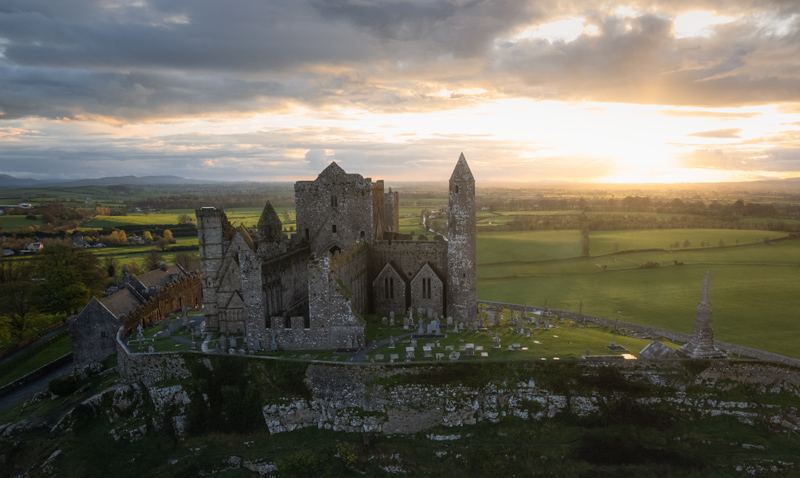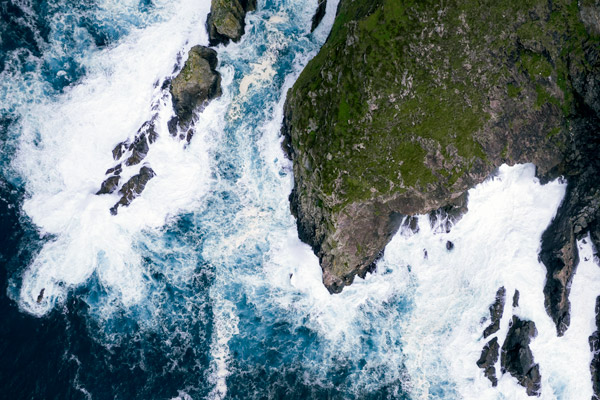The importance of photography exposure can not be overstated. Proper exposure allows a photographer to capture the intended subject matter in the most effective way possible, creating a well-balanced and visually appealing photograph. Achieving the correct exposure involves a delicate balancing act between the settings on your camera that define:
- Aperture
- Shutter speed
- ISO
By adjusting these settings, a photographer can control the amount of light that enters the lens and hits the image sensor, resulting in a properly exposed image. While the above might sound complex it all boils down to one simple truthhow bright your image is.
The Exposure Triangle
The exposure triangle is a fundamental concept in photography that refers to the relationship between aperture, shutter speed, and ISO. These three elements work together to determine the exposure of a photograph, or how light or dark the image will appear. By understanding the exposure triangle, photographers can have greater control over their images and create the desired visual effects. For example, a photographer may use a fast shutter speed to freeze action, a wide aperture to create a shallow depth of field, or a high ISO to capture a low-light scene. By adjusting the settings on the exposure triangle, photographers can capture a wide range of scenes and subjects in a variety of lighting conditions.
A correct exposure is one in which the photograph is neither too light nor too dark, and all of the details in the scene are clearly visible. An under-exposed photograph is one that is too dark, with a lack of detail in the shadows. An over-exposed photograph is one that is too light, with a loss of detail in the highlights. By adjusting the aperture, shutter speed, and ISO settings, photographers can control the exposure of their photographs and achieve the desired level of light and detail in the image. By understanding and mastering the art of exposure, photographers can take their craft to the next level and create truly stunning and impactful photographs.
Aperture
The aperture is the opening in a camera lens through which light passes to reach the camera sensor. The size of the aperture can be adjusted, allowing more or less light to enter the camera. This adjustment is known as the aperture setting, and it is typically measured in f-stops.
A smaller aperture, indicated by a larger f-stop number, means that less light is able to pass through the lens and reach the sensor. This is useful in bright light conditions, as it allows the photographer to reduce the amount of light entering the camera and prevent overexposure.
A larger aperture, indicated by a smaller f-stop number, means that more light is able to pass through the lens and reach the sensor. This is useful in low light conditions, as it allows the photographer to increase the amount of light entering the camera and prevent underexposure.
The aperture also affects the depth of field in a photograph, which is the distance between the nearest and farthest objects in a scene that appear sharp. A smaller aperture, with a larger f-stop number, results in a greater depth of field, where more of the scene appears sharp. A larger aperture, with a smaller f-stop number, results in a shallower depth of field, where less of the scene appears sharp.
Overall, the aperture is a crucial setting in photography, as it controls the amount of light entering the camera and affects the depth of field in a photograph. By adjusting the aperture, photographers can achieve the desired exposure and focus in their images.
Shutterspeed
The shutter speed is the length of time that the camera's shutter is open to expose light to the camera sensor. The shutter speed is typically measured in seconds or fractions of seconds, such as 1/500th of a second.
A faster shutter speed means that the shutter is open for a shorter period of time, allowing less light to reach the camera sensor. This is useful in bright light conditions, as it allows the photographer to reduce the amount of light entering the camera and prevent overexposure. It is also useful for capturing fast-moving subjects, as it freezes the motion in the frame.
A slower shutter speed means that the shutter is open for a longer period of time, allowing more light to reach the camera sensor. This is useful in low light conditions, as it allows the photographer to increase the amount of light entering the camera and prevent underexposure. It is also useful for capturing blurred motion, as it shows the movement of the subject in the frame.
The shutter speed also affects the overall exposure of a photograph, along with the aperture and ISO settings. A fast shutter speed can be used to freeze a moving subject, while a slow shutter speed can create a sense of motion in the frame. By adjusting the shutter speed, photographers can achieve the desired exposure and motion in their images.
ISO
ISO is a measure of a camera's sensitivity to light. The ISO setting determines how sensitive the camera's sensor is to light, with higher ISO values resulting in greater sensitivity. The ISO setting is typically measured in numbers, such as 100, 200, or 400.
A lower ISO value, such as 100, means that the camera's sensor is less sensitive to light. This is useful in bright light conditions, as it allows the photographer to reduce the sensitivity of the sensor and prevent overexposure. It is also useful for capturing high-quality images, as a lower ISO value reduces image noise or grain.
A higher ISO value, such as 800 or 1600, means that the camera's sensor is more sensitive to light. This is useful in low light conditions, as it allows the photographer to increase the sensitivity of the sensor and prevent underexposure. It is also useful for capturing fast-moving subjects, as a higher ISO value allows the photographer to use a faster shutter speed.
The ISO setting, along with the aperture and shutter speed, determines the overall exposure of a photograph. A lower ISO value is generally preferred for high-quality images, while a higher ISO value may be necessary in low light conditions. By adjusting the ISO setting, photographers can achieve the desired exposure in their images.
This article is part of our beginner photography series aimed at taking novice photography to the next level!




